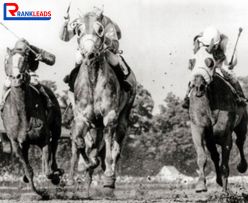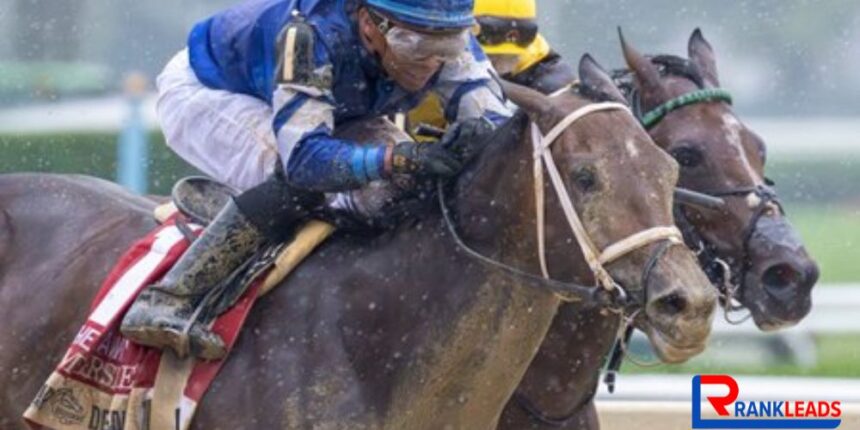Bloodhorse is a term synonymous with thoroughbred horse racing, an industry steeped in history, competition, and passion. This article will delve into the intricate world of bloodhorse racing, covering its history, the role of breeding, the importance of training, and much more. Whether you’re a seasoned racing enthusiast or new to the sport, this guide offers valuable insights.
What is a Bloodhorse?
A bloodhorse refers to a thoroughbred horse specifically bred for racing. These horses are known for their speed, agility, and stamina, making them ideal competitors in the sport of horse racing. The term “bloodhorse” emphasizes the significance of lineage and breeding in creating champion racers.
The History of Bloodhorse Racing

Origins of Thoroughbred Racing
The origins of bloodhorse racing date back to the 17th century in England, where selective breeding began. Thoroughbreds were developed by crossing native mares with imported stallions of Arabian, Barb, and Turkoman descent. These horses were valued for their speed and endurance.
Expansion Across the Globe
By the 18th century, thoroughbred racing spread to North America, Australia, and other parts of the world. The sport gained immense popularity, becoming a cultural and economic phenomenon.
Modern-Day Racing
Today, thoroughbred racing is a global industry, with iconic events like the Kentucky Derby, Royal Ascot, and Melbourne Cup capturing the attention of millions.
The Importance of Pedigree in Bloodhorse Racing
Understanding Lineage
The pedigree of a bloodhorse is one of the most critical factors in its potential success on the racetrack. Breeders meticulously analyze bloodlines to match stallions and mares that complement each other.
Key Bloodlines in History
- Darley Arabian: One of the three founding sires of the thoroughbred breed.
- Eclipse: A legendary racer and sire, whose lineage dominates modern racing.
- Northern Dancer: A 20th-century stallion known for producing countless champions.
Genetic Advantages
Selective breeding enhances traits like speed, endurance, and temperament. This genetic optimization is the cornerstone of creating a successful bloodhorse.
Training a Bloodhorse: The Path to Success
Early Training and Care
Bloodhorses undergo rigorous training from a young age. Key aspects include:
- Foal Care: Proper nutrition and socialization.
- Basic Handling: Getting accustomed to human interaction.
- Breaking-In: Introducing the horse to saddles and riders.
Daily Training Regimens
Trainers design specific exercise routines to build strength, agility, and stamina. These may include gallops, sprints, and endurance runs.
Mental Preparation
Equally important is the horse’s mental conditioning. Bloodhorses are trained to stay calm under pressure, a skill vital during races.
Nutrition and Health: Building a Champion
Balanced Diet
A bloodhorse’s diet plays a significant role in its performance. The diet typically includes:
- High-quality hay and grains.
- Supplements for joint health and coat shine.
- Electrolytes to prevent dehydration.
Regular Veterinary Care
Routine check-ups and vaccinations are essential. Common procedures include:
- Dental care to ensure proper chewing.
- Hoof care, including trimming and shoeing.
- Monitoring for injuries or illnesses.
Preventing Injuries
Preventative care, such as warm-up exercises and appropriate rest, reduces the risk of injuries.
Major Bloodhorse Racing Events
The Triple Crown
In the United States, the Triple Crown is the pinnacle of bloodhorse racing. It consists of three races:
- Kentucky Derby: Known as “The Run for the Roses.”
- Preakness Stakes: Held two weeks after the Derby.
- Belmont Stakes: The final and longest leg.
International Competitions
- Royal Ascot: A prestigious British event attended by royalty.
- Melbourne Cup: Dubbed “the race that stops a nation” in Australia.
- Dubai World Cup: Known for its lucrative prize purse.
Breeders’ Cup
This American series features races across various categories, showcasing the best bloodhorses globally.
The Role of Jockeys and Trainers

Jockeys: The Riders of Champions
A skilled jockey can make a significant difference in a race. Key qualities include:
- Strategic decision-making.
- Physical fitness and balance.
- Strong communication with the horse.
Trainers: The Architects of Success
Trainers develop personalized plans for each horse. Their expertise in understanding equine behavior and physiology is critical.
Betting on Bloodhorse Races
Types of Bets
- Win: Betting on the horse to finish first.
- Place: Betting on a horse to finish first or second.
- Exacta: Predicting the top two finishers in order.
Tips for Beginners
- Research horse and jockey stats.
- Consider track conditions.
- Start with small bets to gain experience.
Technological Advances in Bloodhorse Racing
Performance Analytics
Modern technology allows trainers to monitor a horse’s heart rate, speed, and stride length, providing data to optimize training.
Improved Track Surfaces
Synthetic tracks reduce the risk of injuries and improve race safety.
Virtual Racing
Virtual simulations and betting have emerged as a new way to engage fans.
The Future of Bloodhorse Racing
Sustainability and Ethics
The industry is moving towards more ethical practices, including:
- Improved living conditions for horses.
- Stricter regulations on medication use.
- Greater transparency in breeding practices.
Global Expansion
New markets, particularly in Asia and the Middle East, are driving the growth of the industry.
Technological Integration
Advances in AI and data analysis will continue to revolutionize training and breeding practices.
Conclusion
Bloodhorse racing is a fascinating blend of tradition, innovation, and passion. From its historical roots to its modern-day prominence, the sport captivates millions worldwide. Whether you’re drawn to the thrill of the races, the art of breeding, or the science of training, the world of bloodhorse racing offers something for everyone. Embrace the excitement and immerse yourself in this timeless sport.








